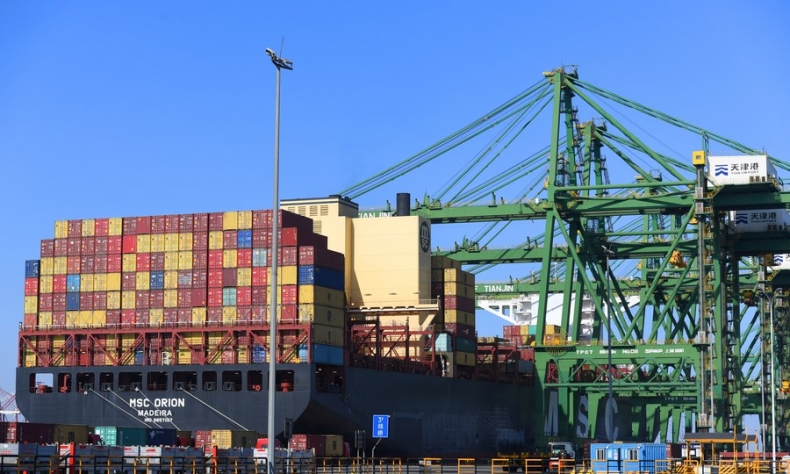China’s Robust Foreign Trade Upshot of Opening up Efforts

As China has entered a new era of development, its endeavors to promote further opening up will help it establish better connections with the rest of the world and enable China to share more opportunities for win-win cooperation with other countries, thus to foster global economic growth and prosperity.
Ever since the introduction of its reform and opening-up policy, China has continued to achieve tremendous economic development, becoming the second-largest economy of the world against all the odds.
Nothing has stopped its robust journey to be a global economic engine and factory due to its pragmatic economic strategies and plans.
China has stunned the world through staging a miraculous and nearly unthinkable turnaround from the devastating impact of the COVID-19 pandemic on its economy as well as its public health. It is the only major country in the world posting positive economic growth in 2020.
The country has proved its mettle in handling the economic crisis by ensuring vast growth in its foreign trade, in terms of both exports and imports, in the first quarter of this year.
There was a 29.2% year-on-year surge in foreign trade to 8.47 trillion yuan ($1.29 trillion). Exports soared 38.7% on a yearly basis to 4.61 trillion yuan, while its imports jumped 19.3% year-on-year to 3.86 trillion yuan, according to the latest data released by the country’s General Administration of Customs.
This is a manifestation of China’s continued opening up efforts that have indeed become the main driving force of its robust growth of foreign trade and overall economic development. With its commitment to becoming ever more open, China has adopted a series of policies to promote high-standard liberalization and facilitation of trade and investment, such as the establishment of free trade zones, holding import expos, reducing entry barriers of foreign capital, as well as promoting trade negotiations.
All have significantly eased market access, and contributed to its target to form globally-oriented networks of trade, investment and financing, production, and services, so as to promote international economic cooperation.
The free trade zones emphasize the importance of advanced systems rather than preferential policies. China has introduced special tax incentives for foreign investments in the zones. It has granted greater independence on international trade activities.
They are attracting and utilizing foreign capital by means of joint ventures and partnerships as well as wholly foreign-owned enterprises. Export-oriented products and goods are being produced, resulting in positive growth of exports and foreign direct investment.
So far, China has established 12 large free trade zones. They employ 4% of the overall workforce and handle goods representing around 17% of total Chinese imports. Around half of these goods are for domestic consumption and half are for re-export.
Electronics and machinery passing through them account for 20% of imports in their respective sectors, while transport goods make up 25% imports in that particular sector, according to the European Central Bank.
Following the principle of win-win cooperation, the Belt and Road Initiative has also helped to expand China’s foreign trade and promote trade cooperation with other countries. In the first quarter, China’s total trade with BRI countries increased 21.4% to 2.5 trillion yuan.
Bangladesh is one of the active and important participants of the initiative. It has been getting zero tariffs on 97% of its goods exported to China from last year. A total of 8,256 Bangladeshi products are so far exempt.
Other measures, like holding an import expo, reducing entry barriers of foreign capital, trade negotiations, and regional and multilateral trade talks have entailed further deepening of bilateral and multilateral economic and trading engagements of China with the rest of the world.
China’s economic and trading engagements with other countries resulted in significant growth in the first quarter of 2021. Official data shows its exports to the European Union rose 36.4% year-on-year, and exports to the U.S. surged 61.3%.
As China has entered a new era of development, its endeavors to promote further opening up will help it establish better connections with the rest of the world and enable China to share more opportunities for win-win cooperation with other countries, thus to foster global economic growth and prosperity.
Md Enamul Hassan is a news editor and broadcast journalist at China Media Group (CMG) in Beijing.
 Facebook
Facebook
 Twitter
Twitter
 Linkedin
Linkedin
 Google +
Google +










